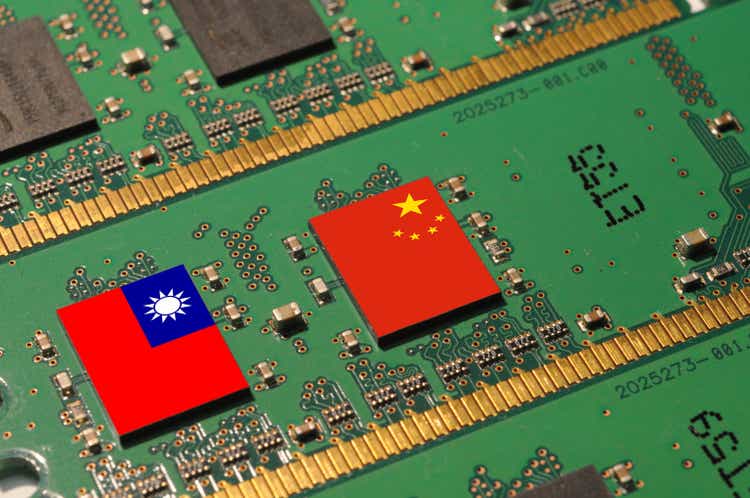undefined undefined/iStock via Getty Images
By Iris Pang
Semiconductors are important for trade in Mainland China and Taiwan
Semiconductors contribute around 40% of Taiwan’s exports, and electronic parts and goods contribute more than 30% of Mainland China’s exports. More Taiwanese semiconductor companies have factories located in Mainland China to fulfil part of Taiwan’s export orders.
In July, we noted a weakness in demand for semiconductors, and we have seen export orders in Taiwan slump into a year-on-year contraction. Data releases on international trade for August show a continuation of this trend.
The pain point for semiconductors came from a drop in demand for Taiwan’s headline export – smart devices – which grew at a mere 2% year-on-year in August compared to 14.2% YoY in July. And within all export items, export of information, communication and audio-video products contracted 1.6% YoY. At the same time, Mainland China’s exports fell sharply to 7.1% YoY in August from 18.0% YoY in July. And integrated circuits, which are mostly semiconductors, fell 17.2% YoY in US dollar terms.
The worst is yet to come
Taiwan’s imports show that parts of the electronic product fell 4.3% YoY in August, which is in big contrast to 23.7% YoY year-to-date growth between January and August. This highlights the increasing risks that come from the demand for semiconductors falling sharply. This will affect trade and manufacturing activities in Taiwan and Mainland China.
As high inflation continues to lower purchasing power in the export destination of the US and Europe, and with Mainland China suffering from weak consumer demand from the real estate crisis, we cannot rule out that the bad time for semiconductors and therefore trade for Taiwan and Mainland China is going to get worse for the remainder of 2022.
Content Disclaimer
This publication has been prepared by ING solely for information purposes irrespective of a particular user’s means, financial situation or investment objectives. The information does not constitute investment recommendation, and nor is it investment, legal or tax advice or an offer or solicitation to purchase or sell any financial instrument. Read more.
Editor’s Note: The summary bullets for this article were chosen by Seeking Alpha editors.


Be the first to comment